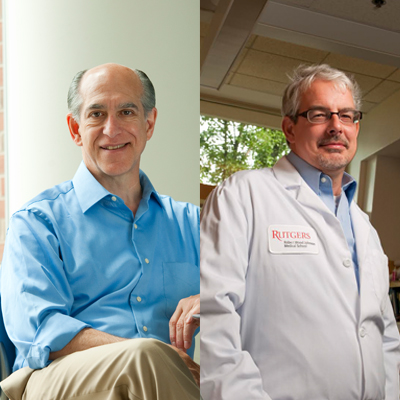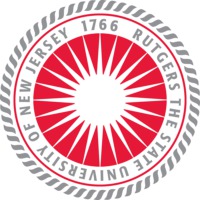Leveraging stem cells to define molecular mechanisms of autism
In 2014, the Centers for Disease Control and Prevention identified 1 in 68 children (1 in 42 boys and 1 in 89 girls) as having autism spectrum disorder (ASD), a condition that affects social interactions, motor behaviors and brain development. Autism is a uniquely human disorder that does not occur in other mammals and primates. Therefore, using animal models to study its causes have inevitable limitations. Autism affects brain development and as a consequence it is almost impossible to obtain human cellular samples to understand its neurobiological basis, which is necessary to develop new therapies.
To circumvent these difficulties, Drs. Emanuel DiCicco-Bloom, a practicing Child Neurologist, and James Millonig, an Associate Professor of Neuroscience & Cell Biology, at Robert Wood Johnson Medical School of Rutgers University are leveraging scientific advances that were only created in 2007. They are generating stem cells (induced pluripotent stem cells or iPSCs) from individuals with autism. From these stem cells they produce human neurons and for the first time they are able to watch how autism neurons develop and identify what neurobiological processes are abnormal. Drs. DiCicco-Bloom and Millonig work as a team to determine whether the basic processes involved in making a brain—including cell proliferation, survival, and differentiation—occur normally in cells derived from people with autism. Since non-genetic environmental factors also contribute to autism risk, they are also investigating whether or not affected individuals are more sensitive to certain factors that may worsen the neurobiological phenotypes.
Autism is also a very heterogeneous disorder, making it very difficult to develop therapies that would be benefit all affected individuals. To address this difficulty, Drs. DiCicco-Bloom and Millonig are taking a personalized medicine approach, as they define the cellular differences that occur in each affected individual. They are also applying the latest scientific advances in –omic technologies that allow the exploration of all the molecules that make up a cell in one experiment: genes [genomics], mRNA [transcriptomics], proteins [proteomics] and metabolites [metabolomics] to define the molecular pathways that contribute to these personalized differences.
Current research includes:
- Neurobiological Analysis of Human Neurons Generated from Individuals with Autism: Drs. DiCicco-Bloom and Millonig are studying how autistic neurons divide, mature, form synapses, and signal. This will allow them to understand what goes wrong at the cellular level for each individual with autism. To better detect differences in these fundamental processes, they treat the cells with developmentally-relevant growth factors that are important for normal brain development. By using this unique and instructive approach of challenging neurons with growth factors, the team is able to discover phenotypes and abnormalities that they would not have otherwise identified.
- Omics: To take a personalized medicine approach to autism, Drs. DiCicco-Bloom and Millonig are using advances in –omic technologies. They will determine the genetic (Next-generation genome sequencing) and biochemical (transcriptome, proteome, metabolome) basis of the observed neurobiological defects. This knowledge will allow them to determine which molecular pathways are disrupted in autism and, in turn, design targeted treatments to overcome the abnormalities of the neurons in culture. If this is successful, then these same or related drugs or therapies may be candidates for treating individuals.
- The Role of Environmental Factors: Non-genetic environmental factors also contribute to autism. Interestingly, many investigators worldwide have noticed that there are suggestive effects of living in cities, such as changes in industrialization, air pollution, oxidative stress, and pesticides that may alter the function of cellular and biochemical pathways. With the human neurons in a dish, Drs. DiCicco-Bloom and Millonig can directly examine these effects.
Bio
Dr. Emanuel DiCicco-Bloom’s main area of interest is in nervous system development and how abnormalities contribute to brain disease. As a physician-scientist, he is motivated to share his knowledge of brain development and scientific discovery with the public, and to advise advocacy organizations and government institutions on how basic research can help address brain disease. He has worked for many years advising private autism foundations regarding research priorities and strategies and selecting the best research to support. He has also performed reviews for NIH Study Sections and other federal agencies, like DOD.
Development of the brain has always fascinated Dr. DiCicco-Bloom since his undergraduate years at Princeton, where he studied developing frogs. After obtaining his M.D. at Cornell University Medical School (now Weill Cornell), he received research and child neurology training with Dr. Ira B. Black, M.D., at Cornell-NYH, where he was a pioneer in the field of neurogenesis and the regulatory functions of neurotrophic and neuropeptide factors. He is a leading expert in taking neurons from the rodent (rat and mouse) brain and growing them in culture in ways that recapitulate in vivo brain development. This vast experience with development of the brain puts him in prime position to explore how human neurons he generates in cultures from blood cells differ from individuals affected by neurodevelopmental disorders, like autism. Science’s new abilities to generate human neurons now allow him to directly test what genetic and environmental factors may contribute to human autism. It is very exciting and rewarding to directly communicate with families about how the studies can be "personalized" to identify possible person-specific therapies.
Dr. James Millonig received a B.S. in biochemistry from the University of Rochester, and went to Oxford University, England, where he earned a Master's degree researching gene regulation during bacterial sporulation. He then enrolled in the Molecular Biology Ph.D. program at Princeton University, and completed his thesis research with Dr. Shirley Tilghman, who is a former President of the University. In Dr. Tilghman’s lab, Dr. Millonig used mouse molecular genetics approaches to study gene expression during mouse development. He then joined the laboratory of Dr. Mary Beth Hatten Ph.D. at The Rockefeller University as a post-doctoral researcher to study brain development using genetic approaches.
As Director of the Rutgers Robert Wood Johnson (RWJMS)/Princeton M.D./Ph.D. program, as well as Senior Associate Dean of Rutgers Graduate School of Biomedical Sciences at RWJMS, Dr. Millonig has been a faculty member at RWJMS in The Center for Advanced Biotechnology and Medicine and Department of Neuroscience and Cell Biology since the fall of 1999. Dr. Millonig is an expert in genetics and molecular biology, and has been studying gene regulation during development for the last 25 years. His laboratory demonstrated that the ENGRAILED 2 gene is an ASD susceptibility gene, and his lab is now studying the molecular and developmental basis of autism by generating and characterizing induced pluripotent stem cells (iPSCs) from individuals with autism and their unaffected brothers.
In the News
Childhood phobias led Rutgers postdoc to research how brain circuitry affects behavior
Publications
Videos
Awards
MD Clinical Investigator Award, NINDS, 1985-1988
Scientific Service Award, National Alliance for Autism Research, 2005
Elected member, Dana Foundation, 2013
Councilor, Society for Neuroscience, 2013-2017
Basil O’Connor Starter Research Award, 2003
NARSAD Young Investigator Award, 2008
Thomas A Edison Patent Award Winner- Medical Diagnostics, 2012
Patents
U.S. Patent 7,629,123, "Composition and Methods for Diagnosing Autism"
Inventors: Millonig; James H., Brzustowicz; Linda, Gharani; Neda. Issued December 8, 2009 to University of Medicine and Dentistry of New Jersey, Rutgers, The State University


